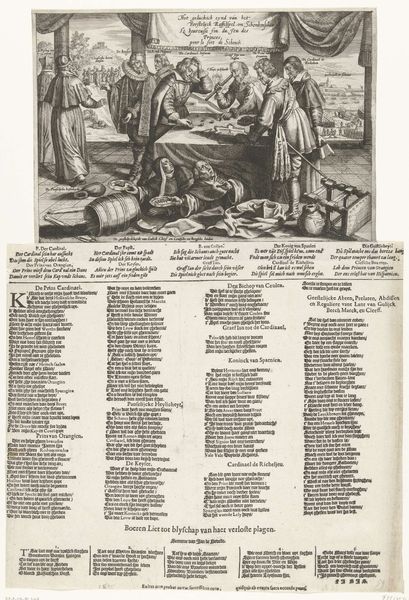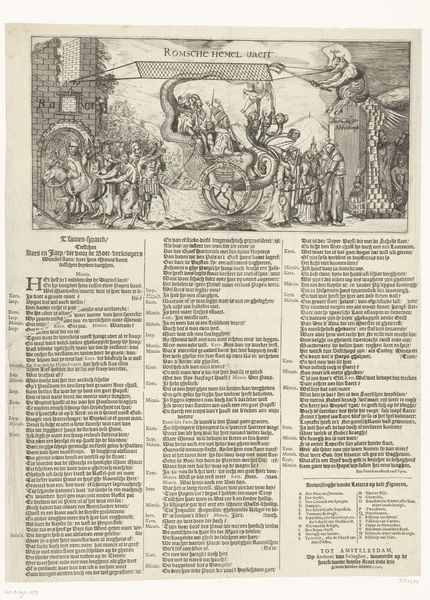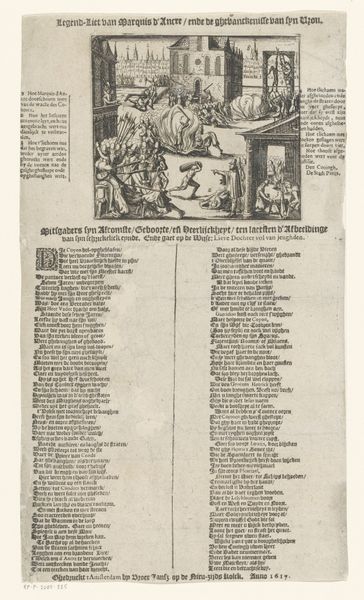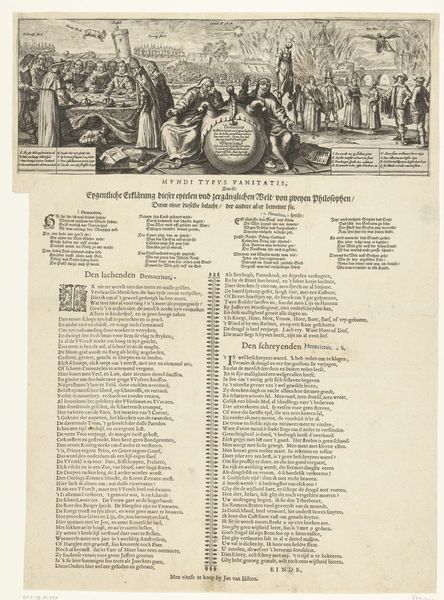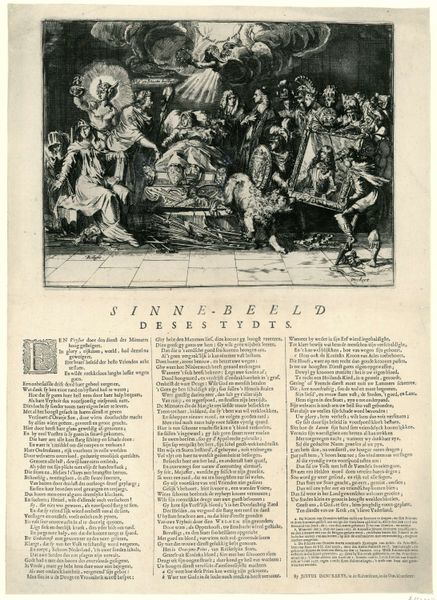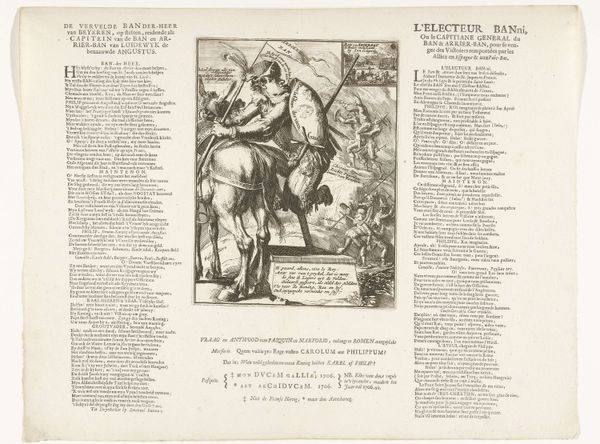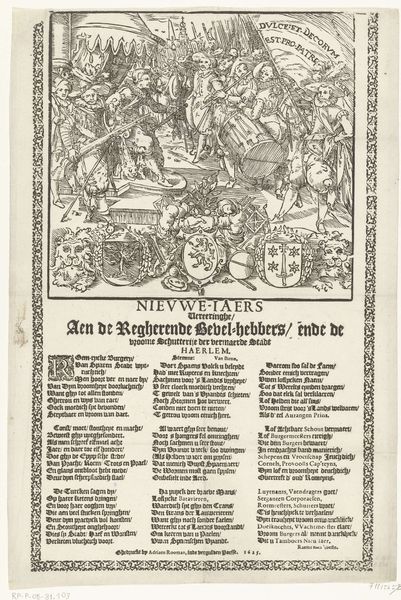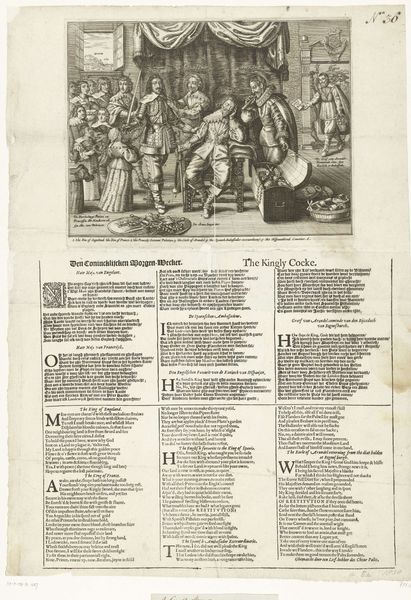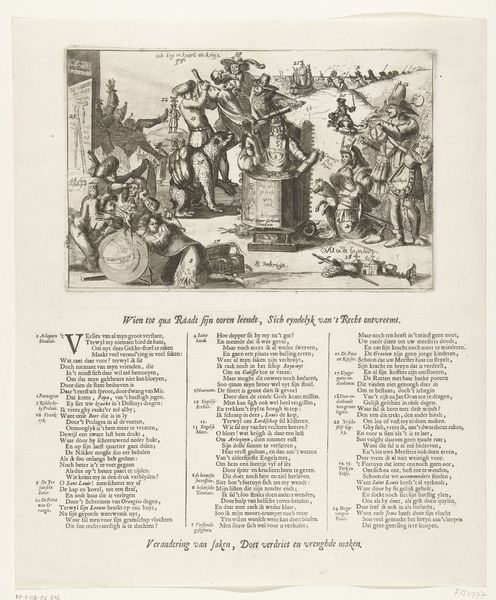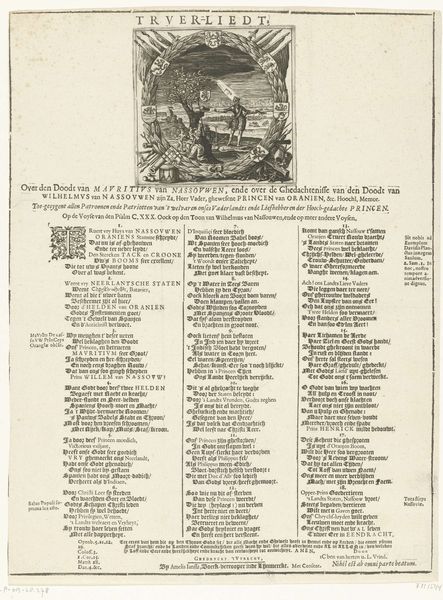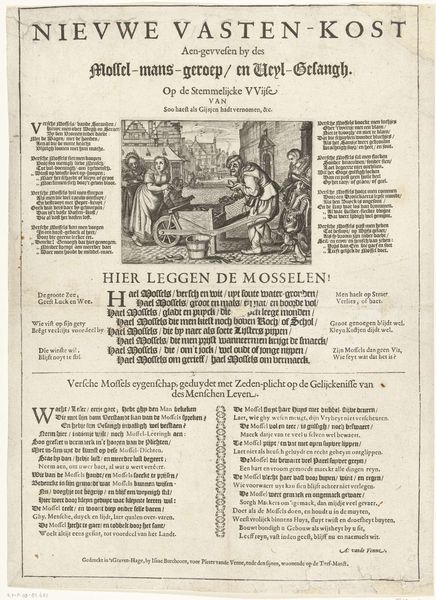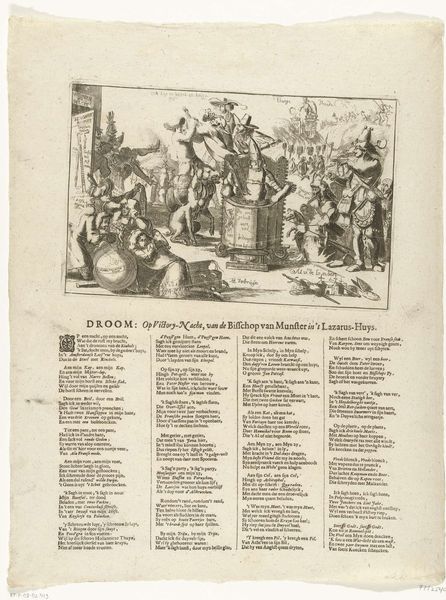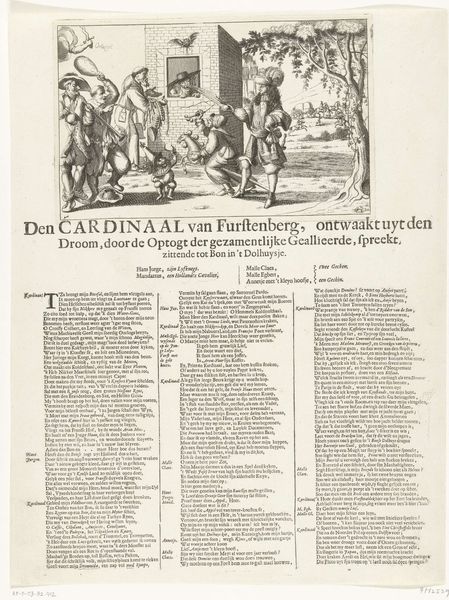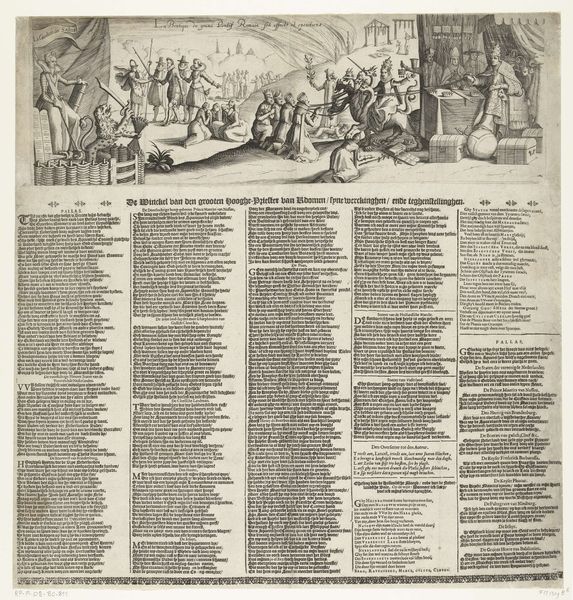
graphic-art, print, etching, engraving
#
graphic-art
#
narrative-art
#
baroque
# print
#
etching
#
history-painting
#
engraving
Dimensions: height 415 mm, width 292 mm
Copyright: Rijks Museum: Open Domain
Curator: This etching, made anonymously in 1674, is titled "Spotprent op de bisschop van Münster, 1674", or "Satirical print on the bishop of Münster." It resides in the Rijksmuseum. Editor: The initial impression is busy, cluttered, but intentionally so. The close hatching and layering create a kind of chaotic energy. It also feels like a document, an artifact, due to the extensive text, typical for prints from that period. Curator: The layering emphasizes the central theme of disrupting authority. See how the central figure, the bishop, is caught between dream and reality, besieged by a throng of jeering figures. The figures themselves are all caricatures, inversions of typical virtues, their grotesque features highlighting the folly and corruption of the church. Editor: And look at how this "satirical print" employs a traditional process. The precision and detail attainable with etching and engraving were used here, ironically, not to portray refinement but to amplify vulgarity. It speaks to the use of high-art methods in the service of, shall we say, subversive ends. The print becomes a method of disseminating criticism en masse, a tangible thing for a wide audience to access. Curator: Note too how the window, often a symbol of clarity or revelation, instead reveals a devilish figure mocking the bishop. This suggests a deeper spiritual void, not just a political critique. Even the costumes serve a symbolic function, the varied garbs representing the fracturing of societal norms. Editor: I find myself interested in the economic aspect too. This wouldn’t be cheap to produce; consider the labor, the skill. Who paid for this? And how was it distributed? Such tangible artifacts likely ignited countless debates in taverns, workshops—they served as social and material triggers for change. Curator: The composition intentionally feels unbalanced, amplifying a sense of impending doom. The open doorway symbolizes not an exit but a pathway for disruption and ridicule. Ultimately, the artist critiques far beyond one man but targets institutional hubris itself. Editor: To reiterate: a complex mix of craft, capital, and critique, printed onto paper intended for circulation—a potent blend intended to move far beyond art's typical elite sphere. It makes me think about the many unsung hands that worked meticulously on these lines—artisans often ignored. Curator: Indeed. It allows us a complex lens into how anxieties around power, status, and perhaps, belief itself, were being reshaped. Editor: And made material, to spark further dissent. A fascinating snapshot indeed.
Comments
No comments
Be the first to comment and join the conversation on the ultimate creative platform.
